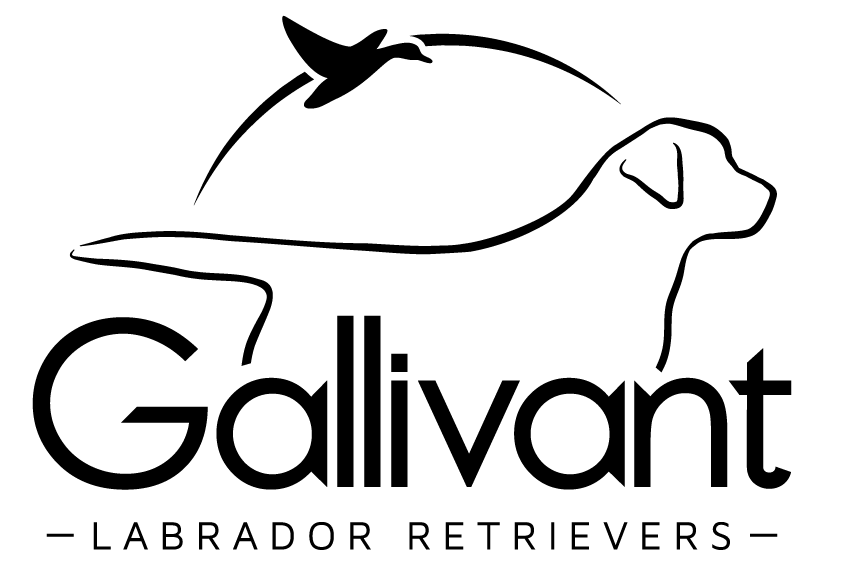Hip and Elbow Dysplasia in Labradors
A key aspect of ethical breeding is the commitment to maintaining and improving the health of a breed. All breeds are prone to certain hereditary issues, that they may pass on to their offspring, but these can be significantly mitigated through careful breeding practices and rigorous health testing before breeding decisions are made. For Labrador Retrievers, one of the most significant health challenges is hip and elbow dysplasia. These conditions can have a profound impact on a dog’s quality of life, making it essential for responsible breeders to prioritize prevention.
What is Hip and Elbow Dysplasia?
Symptoms of both conditions include lameness, stiffness, or difficulty with movement, such as difficulty rising, running or jumping, or a reluctance to play. Dogs with hip dysplasia may lose muscle mass in the rear legs, or display a “bunny-hopping” gait, as a way of relieving pressure on the joints.
Hip dysplasia and elbow dysplasia are two chronic skeletal conditions that can vary in severity and affect the quality of your dogs life significantly. Both conditions are caused by the abnormal development of their respective joint (i.e. the hip joint and the elbow joint). Elbow dysplasia can be caused by different abnormalities, such as a small piece of detached bone, a cartilage defect, misalignment of the bones in the joint, or a growth plate that fails to close during development. Hip dysplasia develops when the ball of the femur doesn’t fit properly into the socket of the pelvis. This misfit causes the joint to grind rather than glide, eventually resulting in cartilage wear, inflammation, and arthritis.
How Do We Manage Hip and Elbow Dysplasia Through Responsible Breeding?
Both hip and elbow dysplasia have a genetic basis, influenced by multiple inheritable genes. However, these conditions cannot be entirely eliminated through parentage alone. A dog may inherit dysplasia even if its parents appear unaffected, as they can still carry and pass on the genes.
Therefore, each and every dog that gets selected for breeding have to undergo testing. Testing consists of x-raying the hips and elbows, after which the radiographs are sent for evaluation by board certified radiologists and then a final decision on the results are made and registered by the Orthopedic Foundation for Animals (OFA).
As joints may continue to develop until 24 months, official certification is only given after the dog reaches this age. However, some breeders might choose to test earlier than this to give some early indication of joint health. This testing is called preliminary testing and cannot be used for official certification, although preliminary evaluations are thought to be generally reliable and can guide early decisions.
The OFA classifies hips into seven different categories: Excellent, Good, Fair, Borderline, Mild, Moderate or Severe, the last three being considered dysplastic. Excellent, Good and Fair are within normal limits. There are no categories for elbows and these are only classified as “normal” if there are no findings on the radiographs. Abnormal elbows are graded from Grade I (mild dysplasia) to Grade III (severe dysplasia).
What Other Factors Influence The Development of Hip and Elbow Dysplasia?
People will often overestimate a puppy’s physical limits, leading to overly demanding or rough play, which can be very taxing on their joints. We caution people against letting their puppies run and play on slippery surfaces, or playing fetch for long stretches of time with their growing dogs - the high impact landings and sudden stops and turns are a recipe for hip and elbow dysplasia.
Although both conditions are hereditary, there are others factors which will magnify the underlying condition. Large dogs with excessive growth rate are especially predisposed, such as our Labradors, but also breeds such as Great Danes, German Sheperds, Saint Bernards or Pittbulls.
Excessive weight, especially in a growing dog, will put stress on the joints and worsen the condition. High impacts or repetitive activities (such as fetch) during growing periods can strain or even damage developing joints, and reversely, a lack of excercise will lead to weak muscles that provide insufficient support to the joints.
Nutrition also plays a vital role in managing these conditions. Excessive calorie intake will exasperate weight gain and growth, putting further stress on the developing joints, and insufficient nutrition can impair skeletal development, making joints more vulnerable.
Studies have also found that early neutering (i.e. pediatric neutering) carries a higher risk of abnormal bone development and therefore hip- and elbow dysplasia. For more information of the risks associated with neutering, read our blog post: “Neutering - A Complicated Topic”.
Hip and elbow dysplasia are significant challenges for Labrador Retrievers and other large breeds. However, through rigorous health testing, careful management of environmental factors, and informed breeding practices, these conditions can be significantly reduced. Ethical breeding is not just about producing puppies; it’s about creating healthier generations for the future.


